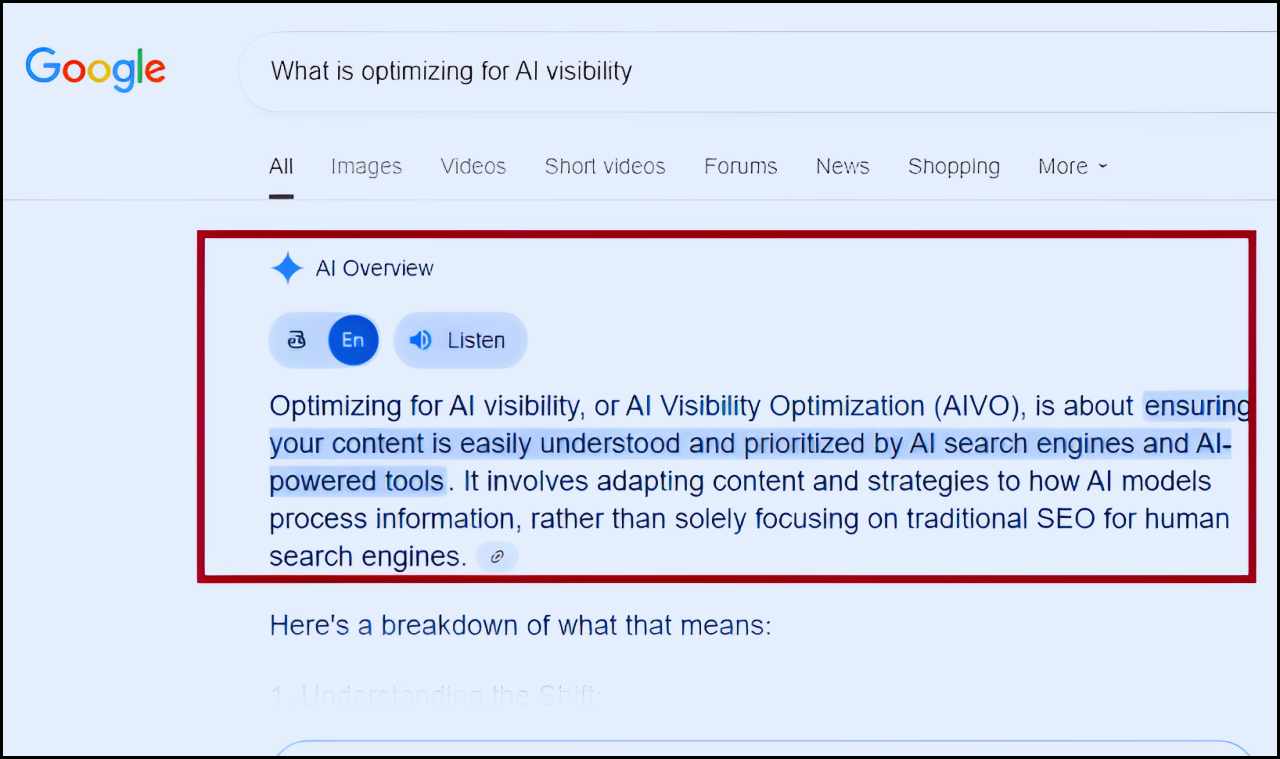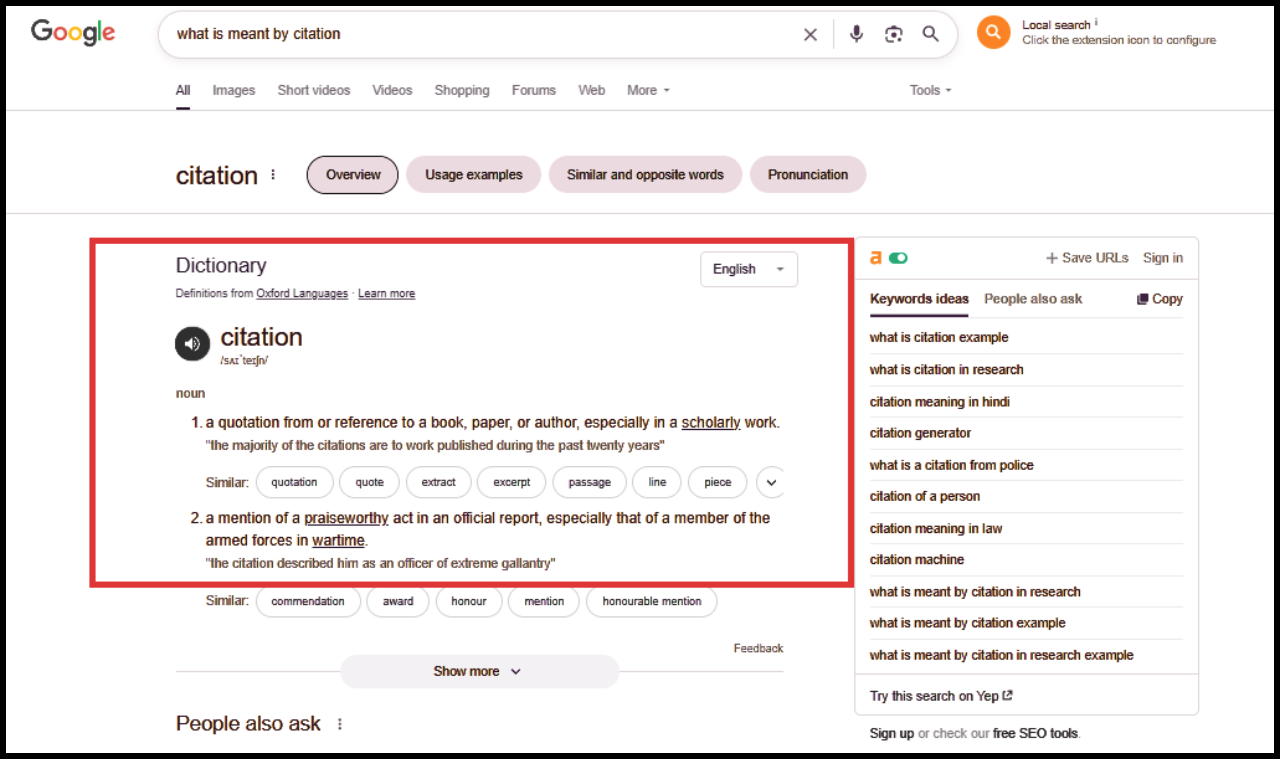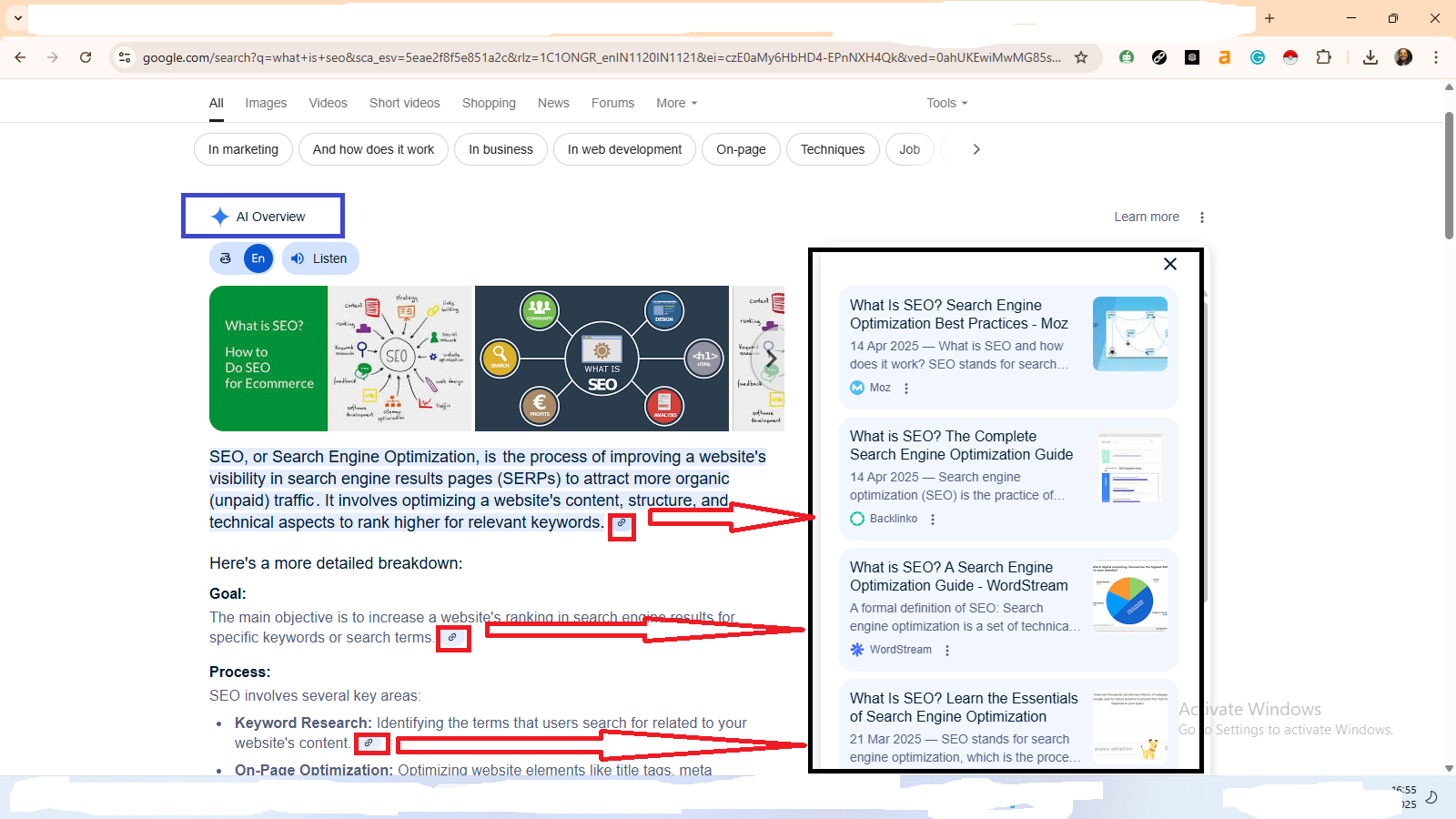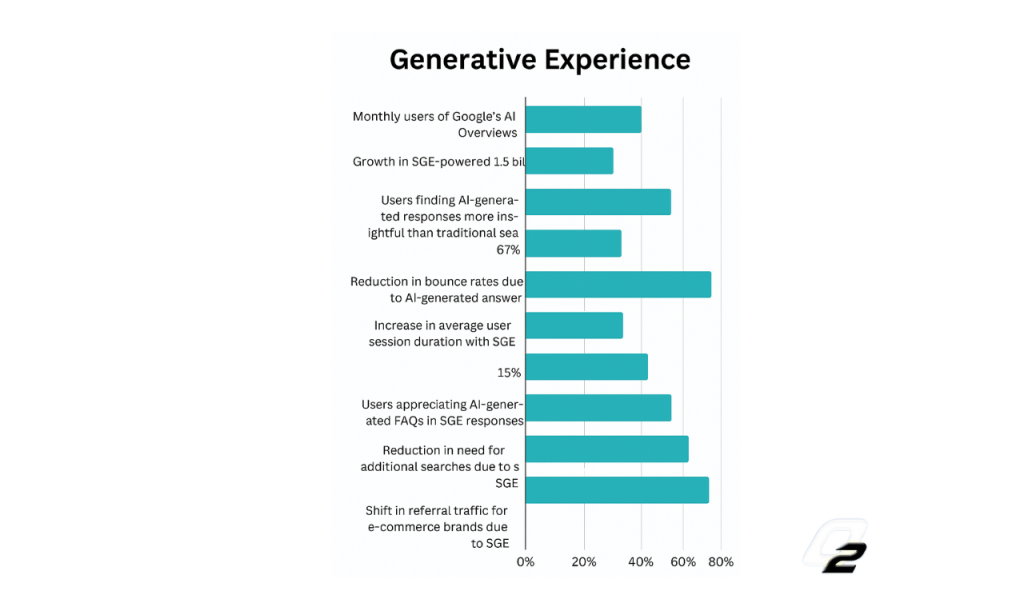Learn effective methods to align with AI algorithms and boost how easily your content gets found in modern search engines.
“Optimizing for AI visibility” means making your online content super easy for smart AI systems (like Google’s AI Overviews or ChatGPT, Perplexity, Gemini, etc.) to find, understand, and use in their answers.
It’s important now because more people get information directly from AI summaries, not just by clicking traditional website links. If your content isn’t “AI-friendly,” it might get missed in this new way of searching.
This AI chatbot provides summaries of the topics and also provides you with the relevant sites, which have disclosed each and every thing in the article.
Optimizing for AI chatbot visibility means in simple way, your content or information should be aimed to cited by artificial intelligence (AI) systems, mostly the search engines like chatgpt, Gemini, etc.

-
- Note: In the above image we can see Google AI Overview is integrated with Gemini.
In the above image you can notice how that AI overview is providing answers to the search query, whereas in the traditional way Google used to recommend us the website link for the search result, but now it has changed, so it is important for the content to be aimed at the Google chatbot.

- Note: The above is the example of the traditional method. Where we can see there is not an AI overview.
Traditionally, websites used to have competition between them. Whoever’s content used to be informative or provide the latest updates, Google used to rank those website blogs at the top, but now Google is still doing the same but with little changes like providing AI overviews.
This AI chatbot will often summarize information from different websites and sometimes even telling you where it got that information and also redirect you to the website providing the latest and accurate information too.
Why AI Visibility Matters Now ?
In today’s digital landscape, AI visibility has become more critical and also more important than ever. With the rise of Generative AI Search and Search Generative Experience (SGE), content must also be crafted not just for the users but also for visible engines powered by AI (Gemini, ChatGPT, etc.)
Traditional SEO practices are now evolving and getting more advanced, as search engine optimization and AI SEO now prioritize context, relevance, and depth of content over mere keyword stuffing.
Understanding how to optimize for AI search is essential. Modern artificial intelligence engine optimization demands well-structured, insightful content that AI can interpret accurately. For example, a well-written blog with clear headings, rich context, and factual depth is more likely to appear in AI overviews generated by platforms like Google’s SGE (Search Generative Experience).
Now it is very crucial that your content be the latest and most accurate because more and more people will get answers directly from AI instead of clicking through many websites. If your information isn’t “AI-friendly,” you might get left out!
The Rise of AI Overviews and Generative AI Search
It is very important now to get listed in AI Overview because this AI chatbot is providing summarized answers to the query and providing the link to the website, so if the user is willing to learn more on that topic, they can directly click on that website. The below is the example of that topic.

The Rise of AI Overviews and Generative AI Search marks a major shift in how users discover and interact with online content. Powered by Large Language Models (LLMs) and Natural Language Processing (NLP), Generative AI Search is changing traditional search behavior by delivering more human-like, summarized responses—known as AI Overviews.
With the evolution of AI Overviews and also generative AI search engines, they are reshaping the digital landscape, offering users more unlearned and comprehensive search experiences. You want the AI to pick your website as a reliable source when it creates these summaries. The advanced models, like Large Language Models (LLMs), Natural Language Processing (NLP), and Natural Language Understanding (NLU), are leading to significant shifts in user behavior and content strategies.
Okay, let’s break down that example in super simple terms:
Imagine you’re trying to find a good place to eat with your family in Goa, specifically an Indian restaurant.
The “Old Way” of Searching (Before AI Overviews):
You’d type “best Indian restaurants families Goa” into Google. Google would then give you a long list of website links. You’d have to click on each one, read through menus, check reviews, and see if it’s family-friendly. It’s like being handed a giant phone book and told to find a restaurant.
The “New Way” with AI Overviews (What’s Happening Now):
You type the same question. But now, instead of just a list of links, Google’s AI (its super-smart computer brain) might give you a short, easy-to-read answer right at the top.
This answer might say something like:
“For family-friendly Indian restaurants in Goa, consider:
- Spice Route: Known for its diverse menu and kid-friendly atmosphere in Candolim.
- North Goa: Offers authentic North and South Indian food with the perfect local Goa touch.
- Goa Spice: Offers authentic local dishes and a spacious seating area perfect for groups near Panaji.
- The Curry House: A popular choice for its delicious curries and welcoming staff in Baga”.
So, from the above example, you can understand how the AI overview is providing you a summary guide instead of visiting each website for your query.

The above image shows how Google’s AI Overviews, powered by its Gemini AI platform, now serve over 1.5 billion users monthly, reflecting the increasing reliance on AI-generated search summaries—Source: Investopedia.
Growth in SGE-powered searches (QoQ) 35% – SEO Sandwitch
Users appreciating AI-generated FAQs in SGE responses 60% – SEO Sandwitch
Shift in referral traffic for e-commerce brands due to SGE 58% – Investopedia, SEO Sandwitch
How AI Models Process and Present Information
For developers or enthusiasts who want more control and privacy, it’s even possible to run ChatGPT locally, enabling them to use such AI capabilities without depending entirely on cloud services.
When you ask a question or type something in the feed, the AI uses something called Natural Language Processing (NLP). Think of this as the AI breaking down your words into tiny pieces and figuring out what each piece means.
Let’s assume you ask how to bake a cake with no eggs and milk. In the above query, you actually asked 3 questions for which this AI model will break down the entire sentence into single pieces and analyze each website answer and provide you with a summarized answer for your query in the AI overview, and it will also provide you with the external sources from where it gathered the information.
This is how this module works, it stores the information and later provides you with the summarized answer for you.
Here’s a simple example:
Let’s say you’ve got a long, detailed article—maybe 5,000 words—about a new type of electric car.
- Instead of you reading the whole thing, an AI like ChatGPT or Google’s Search Generative Experience (SGE) can quickly read it for you.
- It then summarizes that entire article into just a few short, easy-to-read bullet points. These bullet points will give you the main ideas and important facts without you having to spend a lot of time reading the original.
This way, AI saves you time and gives you direct, useful answers, making your online experience much smoother.